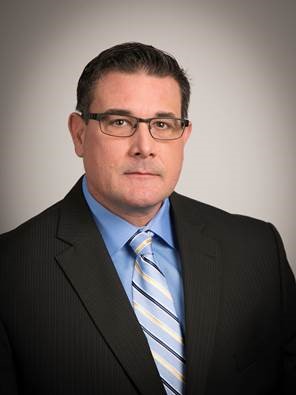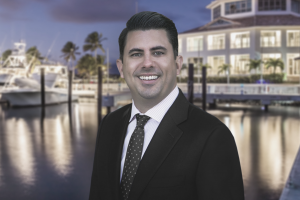EXCLUSIVE – E-Podcast Network Interview with Coy Wells of U.S. Money Reserve

[Eric Dye] This is Eric Dye, and once again, welcome to Enterprise Radio, a part of EPN, the Entrepreneur Podcast Network. Today, we’re speaking with Coy Wells. Coy is the senior sales manager with U.S. Money Reserve, one of the nation’s largest distributors of precious metals, while the company is known as America’s gold authority. Coy is here today to speak with us about a precious metal not to be forgotten, which is silver.
Mr. Wells, a pleasure to have you with us today on Enterprise Radio.
-[Coy Wells] Yes sir, Eric. Thank you for having me on today.
[Eric Dye] And you’re certainly more than welcome. Our pleasure.
So, Mr. Wells, why is silver as a precious metal important to one’s portfolio? Let’s start there.
[Coy Wells] Very good question. I think in today’s time with as much uncertainty that we have going on not only here in the United States but globally, I think it’s important that individuals and consumers understand the need to have alternative assets in their portfolio. We now know that the bull market is going on one of the longest runs that we’ve ever seen in history. With that being said, consumers have to understand that the profits that have been made in the market need to be looked at when uncertainty settles in. And with the market being on the run that it has been on for the last 10 years, consumers have to start looking at other alternative assets.
Silver is one of those other assets. We know in 2008 silver was around $10.54 before its run ended around $54.24. That’s about a 530% increase, which is a pretty significant increase. So timing is crucial in regards to moving money when there’s uncertainty.
[Eric Dye] How does silver correlate to other assets that people typically own?
[Coy Wells] Very good question. Silver is one of the assets that tends to move quickly when there’s uncertainty that sets in. It will maintain, but when the recession sets in after the course of a period of time, it’s an industrial material first and then a precious metal second, so as the recession sets in, we will see the industries pull back on purchases of precious metals, and then we’ll see silver do that, as well. So for any individual that’s out there that’s considering silver to get in initially, like now, and then ride that wave up, and then know when the recession is just about over, it’s key to help to identify, but it is an excellent alternative asset.
But it’s similar to real estate. It’s a tangible asset that you would hold. And it’s something that you would want to hold onto either short term, or you want to ride to the next second wave or hand down as generational wealth in my opinion.
[Eric Dye] Now, Mr. Wells, looking at one’s complete portfolio, how much silver should one own in their portfolio?
[Coy Wells] Very good question, Eric. If you’re looking at the overall portfolio, an individual that has money in equities, money in real estate, checking, savings and all the other areas that they would traditionally have it in, experts recommend that you don’t have more than 30 percent of your money tied up in precious metals. Out of that 30 percent, one would recommend between five and ten percent being held in precious metals. So if you have 100,000 in precious metals, are looking to move money into precious metals up to 100,000, you’re going to recommend that you up to five to ten percent of that money into precious metals, so that would be five to ten thousand dollars on a $100,000 precious metals portfolio would be the recommendation that we would recommend most of our clients today.
-COMMERCIAL BREAK-
[Eric Dye] Today, we are visiting with Mr. Coy Wells, the senior sales manager at U.S. Money Reserve, one of the nation’s largest distributors of precious metals, here on Enterprise Radio, a part of EPN, the Entrepreneur Podcast Network
Now, continuing on, Mr. Wells, where do you see silver going in the future, and what do you base your information on?
[Coy Wells] Great question, Eric. I would say that we could see silver exceed the position that it did in 2011 when the market peaked in silver at $54. A lot of experts out there will tell you that they see gold exceeding well over $100. I think you would see it between 80 and 100 dollars in the near future going into the next recession that’s expected to take place probably in 2019, 2020, or possibly it could happen any time obviously, but that’s when most economists today are predicting that the United States is predicted to have a recession.
But I would say, Eric, between, the price range above 50, 80 to 100.
[Eric Dye] Also, I wanted to ask you this. How come financial advisors and financial institutions are not telling their clients the same thing?
[Coy Wells] Very good question, as well. The primary reason is when you deal in precious metals, precious metals is a private transaction. Number two, precious metals, the big brokers and financial advisors, they don’t deal in silver. Silver is, it can be a bulky item, so they don’t deal in the physical transaction of it.
Brokerage firms and financial advisors, when they sell you an asset, remember, they’re taking your money and they’re putting it into a specific stock that they’re going to get a percentage off of if that they put into a money market account or a mutual fund or some of those other alternative assets. They’re going to take that money, spread it across multiple assets. So there’s really no gain for a financial advisor or a broker to recommend precious metals, because when you take physical possession of that metal itself, Eric, they don’t have control of it. You own it. It’s private. It’s held separate and apart from the other markets. You’re taking physical possession of the product, and because of that, the financial advisors really can’t deal in it. I mean, they’re holding your money and they’re taking your money and they’re making it work for you, opposed to you taking control of your own money and making it work for yourself. That’s really the big difference between the two.
[Eric Dye] Interesting. And taking that further, why are banks buying up so much silver right now?
[Coy Wells] The banks are buying gold because I think most of the listeners that are out there right now, Eric, they do believe I think in their gut that they know that there’s a recession at some point in time that’s going to take place. We know that we’re well overdue for a recession or a deep seated recession here in the United States. The banks are looking to protect themselves just like individuals like you and I are looking to protect our money in alternative assets.
We know for a fact that under the ’08 recession, we saw silver rise from $10 to right over $54. That’s a massive gain for anyone who understands simple economics. When there’s times of uncertainty in the markets, they’re going to be transitioning to alternative assets.
If they’re buying silver today, that means that the banks are forecasting a downturn in the US economy, and the reason they’re forecasting that is because they know that we’re well overdue, as I stated earlier. And because of that, they’re going to start getting ahead of the curve while the silver market is at what they believe is at a low or at the bottom, and then they’re going to ride it up.
We always know the traditional stance on silver is about 18 to 1 to gold, meaning that historically, it takes about 18 ounces gold to, or silver, sorry, to equal one ounce of gold. That’s not the case today. Today, I think without having a calculator here, I think we’re about 85 to 1, which is well undervalued. And for anyone that’s out there that understands the correlation between silver and gold historically, we’re at a low right now.
And if the banks are buying it, that ought to be a further indicator that the banks are preparing a set up for a significant rise in the silver market.
[Eric Dye] Well, Mr. Wells, really good to have had you. Some really good information here and bringing focus to the need to implement silver into our financial portfolios, and we can’t thank you enough for your time today.
Before you go and in conclusion, how does go one about adding silver into their portfolio?
[Coy Wells] Fantastic question, Eric. U.S. Money Reserve, we’re one of the largest precious metal distributors in North America. 1-800-867-6101 would be the phone number I’d recommend. We have a great and fantastic group of sales agents here on site that can help you diversify into any precious metals, but silver is the one that we’re discussing today, and silver is something that we’re going to always recommend that you add to your portfolio for diversification.
For those listeners that are out there and understand some of the topics that we’ve discussed today, silver is an alternative asset. You take physical possession of it. We want you to be in control of your own finances. And the phone number that I’ve just shared with Eric and U.S. Money Reserve can definitely help you add silver to your portfolio.
[Eric Dye] Outstanding information. Can’t thank you enough for your expertise and insight here today. Again, it is USMoneyReserve.com. Mr. Wells, thank so much for being with us here today on Enterprise Radio.
[Coy Wells] Yes sir, Eric. Thank you for your time today, and I look forward to visiting with you in the future, sir.
[Eric Dye] And I do, as well.
We’ve been speaking with Mr. Coy Wells, the senior sales manager at U.S. Money Reserve, one of the nation’s largest distributors of precious metals. And for further details, again, visit USMoneyReserve.com.
And this is Eric Dye, and you’ve been listening to Enterprise Radio, a part of EPN, the Entrepreneur Podcast Network. Tune in to our live location as we are streaming live 24/7 around the world at EPodcastNetwork.com/live. You can also find our live stream on iTunes Radio and TuneIn Radio as well as the TuneIn Radio app for your listening convenience.
And as always, we thank you for your support and for tuning in.
[Voiceover] Thanks again for listening to Enterprise Radio here on the Entrepreneur Podcast Network. To subscribe for future programming, simply visit EPodcastNetwork.com.
[Voiceover] This is the E-Podcast Network.


